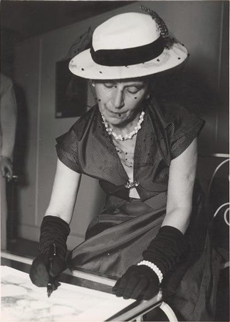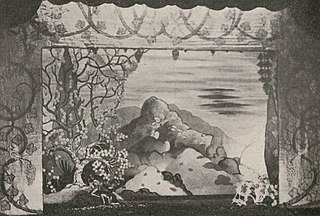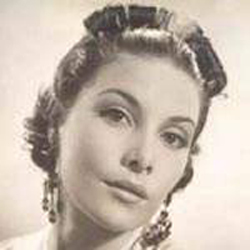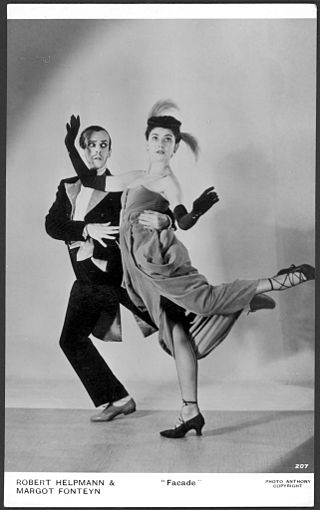Related Research Articles

Angela Isadora Duncan was an American-born dancer and choreographer, who was a pioneer of modern contemporary dance and performed to great acclaim throughout Europe and the United States. Born and raised in California, she lived and danced in Western Europe, the U.S., and Soviet Russia from the age of 22. She died when her scarf became entangled in the wheel and axle of the car in which she was travelling in Nice, France.

The Afternoon of a Faun is a ballet choreographed by Vaslav Nijinsky for the Ballets Russes, and was first performed in the Théâtre du Châtelet in Paris on 29 May 1912. Nijinsky danced the main part himself. The ballet is set to Claude Debussy's symphonic poem Prélude à l'après-midi d'un faune. Both the music and the ballet were inspired by the poem L'Après-midi d'un faune by Stéphane Mallarmé. The costumes, sets and programme illustrations were designed by the painter Léon Bakst.

Beryl Fleur Karney, also known as Beryl Goldwyn, was an English ballet dancer.

Dame Marie Rambert DBE was a Polish-born English dancer and pedagogue who exerted great influence on British ballet, both as a dancer and teacher.

The Royal Ballet is a British internationally renowned classical ballet company, based at the Royal Opera House in Covent Garden, London, England. The largest of the five major ballet companies in Great Britain, the Royal Ballet was founded in 1931 by Dame Ninette de Valois. It became the resident ballet company of the Royal Opera House in 1946, and has purpose-built facilities within these premises. It was granted a royal charter in 1956, becoming recognised as Britain's flagship ballet company.

The Joffrey Ballet is an American dance company and training institution in Chicago, Illinois. The Joffrey regularly performs classical and contemporary ballets during its annual performance season at the Civic Opera House, including its annual presentation of The Nutcracker.

Sir Kenneth MacMillan was a British ballet dancer and choreographer who was artistic director of the Royal Ballet in London between 1970 and 1977, and its principal choreographer from 1977 until his death. Earlier he had served as director of ballet for the Deutsche Oper in Berlin. He was also associate director of the American Ballet Theatre from 1984 to 1989, and artistic associate of the Houston Ballet from 1989 to 1992.

La Péri is a 1912 ballet in one act by French composer Paul Dukas, originally choreographed by Ivan Clustine and first performed in Paris, about Iskender searching for immortality and his encounter with a mythological Peri. It was premiered on April 22, 1912.
Sir Anthony James Dowell is a retired British ballet dancer and a former artistic director of the Royal Ballet. He is widely recognized as one of the great danseurs nobles of the twentieth century.
Dame Merle Park, is a British ballet dancer and teacher, now retired. As a prima ballerina with the Royal Ballet during the 1960s and 1970s, she was known for "brilliance of execution and virtuoso technique" as well as for her ebullience and charm. Also admired for her dramatic abilities, she was praised as an actress who "textured her vivacity with emotional details."

Lynn Seymour was a Canadian-born ballerina, mostly associated with the Royal Ballet in London. She was a muse of choreographer Kenneth MacMillan, creating lead roles in Romeo and Juliet, The Invitation, Concerto, Anastasia and Mayerling, among others. She originated lead roles for several ballets by Frederick Ashton, including The Two Pigeons, Five Brahms Waltzes in the Manner of Isadora Duncan and A Month in the Country. She also guested with various ballet companies throughout her life.
Maryon Lane was a South African ballet dancer who became well known in Britain as a ballerina of the Sadler's Wells Theatre Ballet and as a soloist with the Royal Ballet.
Tina LeBlanc is an American ballet dancer, teacher and ballet master. She joined the Joffrey Ballet in 1988. In 1992, she joined the San Francisco Ballet as a principal dancer. She retired in 2009, then joined the faculty of the San Francisco Ballet School, before returning to the San Francisco Ballet as a ballet master in 2019.
Molly Smolen is an American ballet dancer.
Rambert is a leading British dance company. Formed at the start of the 20th century as a classical ballet company, it exerted a great deal of influence on the development of dance in the United Kingdom, and today, as a contemporary dance company, continues to be one of the world's most renowned dance companies. It has previously been known as the Ballet Club, and the Ballet Rambert.

Pearl Argyle was a South African ballet dancer and actress. She appeared in leading roles with English ballet companies in the 1930s and later performed in stage musicals and in films.

Façade is a ballet by Frederick Ashton, to the music of William Walton; it is a balletic interpretation of items from Façade – an Entertainment (1923) by Walton and Edith Sitwell. The ballet was first given by the Camargo Society at the Cambridge Theatre, on 26 April 1931. It has been regularly revived and restaged all over the world.
Andrée Howard, originally Louise Andréa Enriqueta Howard, was a British ballet dancer and choreographer. She created over 30 ballets.
Frank Staff was a South African ballet dancer, choreographer, producer, and company director. He was a major figure in the history of European theatrical dance in South Africa.
Harold Turner was an English ballet dancer, teacher, and ballet master. Widely recognized as "modern British ballet's first male virtuoso," he had an illustrious career as a principal dancer, after which he continued to perform in character roles. He is acknowledged as a key figure in British dance history.
References
- 1 2 3 4 5 6 7 8 9 10 Kavanagh, Julie (1997). Secret Muses: The Life of Frederick Ashton. ISBN 978-0-679-44269-1.
- 1 2 3 Mackrell, Judy (21 February 2004). "Dance of a goddess". The Guardian.
- 1 2 Citron, Paula (12 June 2008). "Fournier's swan song 'a dance of experience'". The Globe and Mail.
- 1 2 3 4 5 Craine, Debra; Mackrell, Judith (19 August 2010). The Oxford Dictionary of Dance. p. 171. ISBN 978-0-19-956344-9.
- 1 2 "Five Brahms Waltzes in the Manner of Isadora Duncan". Rambert. Retrieved 18 May 2021.
- ↑ Mackrell, Judith (2 January 2005). "Dance review of the year". The Guardian.
- ↑ Dunning, Jennifer (22 October 1983). "Ballet: Joffrey Troupe". New York Times.
- ↑ O'Connor, John J. (22 June 1977). "TV: PBS Explores Deafness and Dance". New York Times.